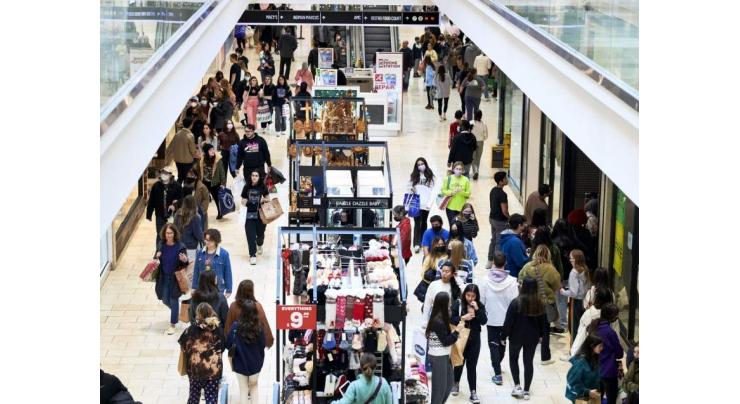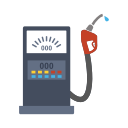
- Home
- Business
- News
- Fed's Key Inflation Gauge PCE Up 5.4% in Year to January Underscores Tough Inflation Fight
Fed's Key Inflation Gauge PCE Up 5.4% In Year To January Underscores Tough Inflation Fight
Fahad Shabbir (@FahadShabbir) Published February 24, 2023 | 09:04 PM

A US inflation indicator closely followed by the Federal Reserve grew 5.4% in the year to January, beating forecasts for the month as well as its previous growth in December, underscoring the central bank's tough fight against inflation
WASHINGTON (UrduPoint News / Sputnik - 24th February, 2023) A US inflation indicator closely followed by the Federal Reserve grew 5.4% in the year to January, beating forecasts for the month as well as its previous growth in December, underscoring the central bank's tough fight against inflation.
Economists polled by US media had forecast January's annualized growth in the Personal Consumption Expenditures (PCE) Index to at least match December's level of 5% after aggressive interest rate hikes by the Fed since March.
Without volatile food and energy prices, the so-called core PCE Index was up 4.7% during the 12 months to January versus a forecast 4.3% and a previous growth of 4.4% in the year to December, data from the US Commerce Department showed.
The US dollar hit a seven-week high against a major of major currencies on Friday upon the release of the PCE data, on expectations that the Fed will resort to more hawkish monetary actions amid the "hotter inflation" in the United States, economist Greg Michaelowski said in a post on the ForexLive forum.
The Consumer Price Index, a broader gauge of inflation, stood at a four-decade high of 9.1% for the year to June. It has moderated since to an annualized growth of 6.4% in January. The Fed's target for inflation is just 2% per year.
"The PCE report shows that the Fed needs to do a little more," Federal Reserve Bank of Cleveland President Loretta Mester said. "It is gratifying that inflation declined from (its) peak, but more is needed."
President Joe Biden, in a statement released by the White House, concurred by saying, "Today's report shows we have made progress on inflation, but we have more work to do."
To clamp down on runaway price growth, the Fed added 450 basis points to interest rates since March via eight interest rate hikes. Prior to that, rates stood at nearly zero after the global outbreak of the coronavirus in 2020.
The Fed's first post-COVID interest rate hike was a 25-basis point increase in March last year. It then moved up with a 50-basis point increase in May. After that it executed four back-to-back hikes of 75 basis points from June through November. Since then, it has returned to a more modest 50-basis point increase in December and a 25-basis point hike in February.
Rate expectations for the Fed's March 22 policy meeting, monitored by foreign exchange traders, remained at 25 basis points on Friday, though that could change with the increasing calls for tighter policing from the central bank's hawks.�
Related Topics
Recent Stories

Law Minister expresses Govt's resolve to address issue of missing persons

Rizwan’s batting order may be changed: Sources

Nawaz Sharif to visit Guangzhou exhibition in China

FM Dar not traveling to China: Foreign Office

PM takes notice of deliberate delay in tax cases

Iranian President visits Allama Iqbal’s mausoleum

Iranian President arrives in Lahore today

Currency Rate In Pakistan - Dollar, Euro, Pound, Riyal Rates On 23 April 2024

Today Gold Rate in Pakistan 23 April 2024

Islam enlightened world with its teachings about knowledge: Dr Jamileh

Record London close as oil prices drop on easing Middle East fears

TV tower in Kharkiv struck as Russia captured village
More Stories From Business
-
General Motors lifts 2024 profit forecast after strong Q1
7 minutes ago -
110 urban buses to run in Faisalabad: minister
17 minutes ago -
PSX loses 74 points
17 minutes ago -
KPT shipping movements report
2 hours ago -
Gold rates further decline by Rs.7,800 per tola to Rs.240,900
4 hours ago -
Tesla earnings a 'moment of truth' for Musk after stumbles
6 hours ago
-
Foreign exchange rates
7 hours ago -
EXCHANGE RATES FOR CURRENCY NOTES
7 hours ago -

Currency Rate In Pakistan - Dollar, Euro, Pound, Riyal Rates On 23 April 2024
8 hours ago -

Today Gold Rate in Pakistan 23 April 2024
9 hours ago -
Tokyo shares open higher
9 hours ago -
Pakistan commends CIDCA for Continued Support in Economic Development
16 hours ago







